This 1829 engraving of Addlethorpe church shows the cross stump on the right
Addlethorpe


This 1829 engraving of Addlethorpe church shows the cross stump on the right

Parish/District Aisthorpe/West Lindsey Location Aisthorpe churchyard (Lost Cross) Category Churchyard cross/ Lost cross National Grid Ref c. SK 94638016 Designation None Stone Type – Refs The Lincolnshire HER has a record for this cross base Visits DS/DAS: 14 Feb 2015

Socket stone at Tothby Manor near Alford.
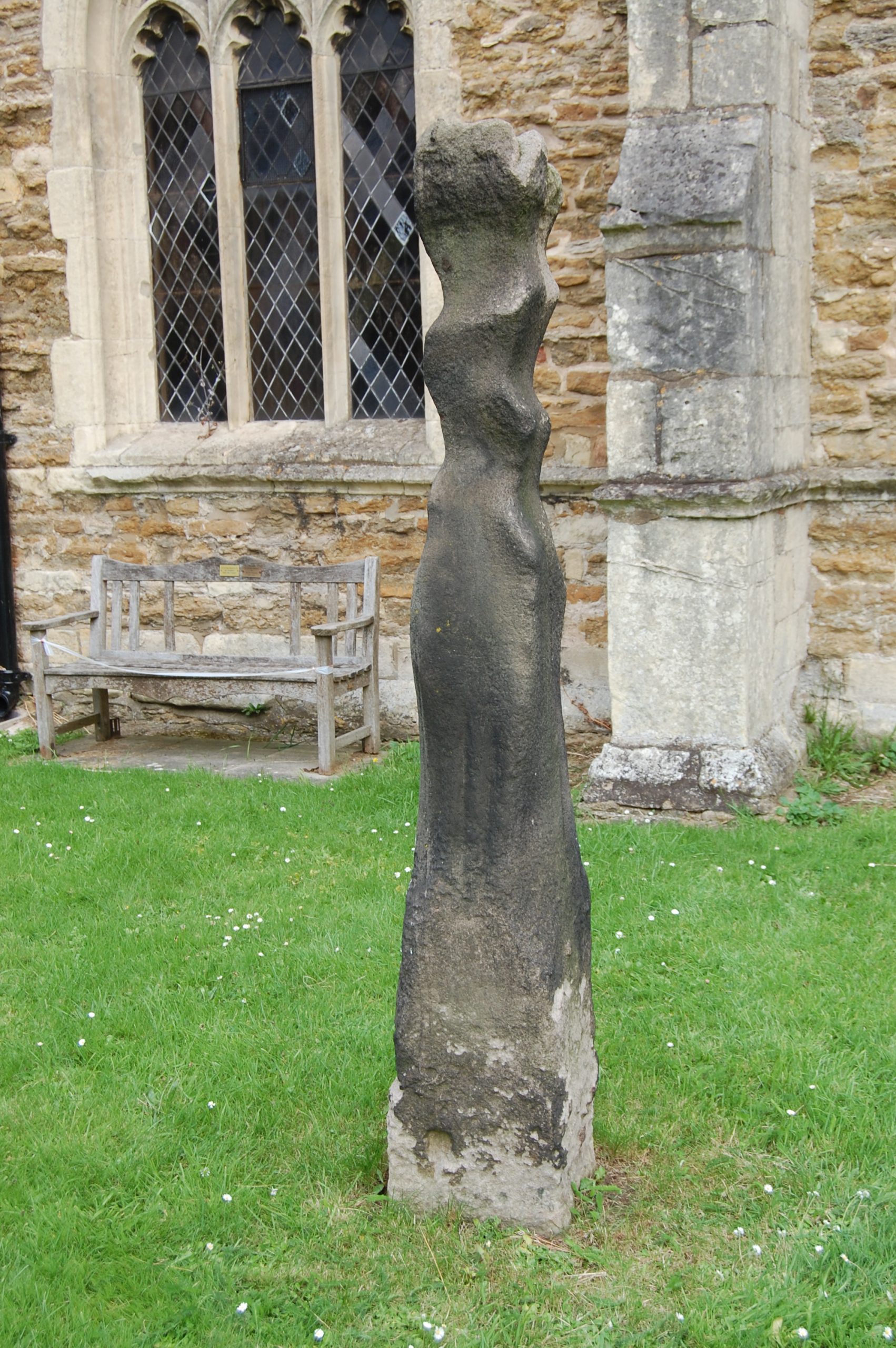
Parish/District Alkborough/North Lincs Location c. 4m south of the nave of St John the Baptist church Category Churchyard cross National Grid Ref SE 8819 2187 Designation Listed I Stone type Sandstone/gritstone Refs Davies, 1915, LN&Q vol xiii No5 pp.129-157 Visits

Parish/District Allington/South Kesteven Location Allington Village Green (now more of a traffic island) Category Village cross National Grid Ref SK 8581 4012 Designation Scheduled / Listed II Stone Type Limestone (mostly) Refs Davies, D. S.,1913, Lincs N & Q, vol
Parish/District Alvingham/East Lindsey Location in churchyard of St Adewold’s church (Lost Cross) Category Churchyard cross / Lost Cross National Grid Ref c. TF 3675 9131 Designation None Stone Type – References see Lincs HER There is a report for Alvingham

Parish/District Ancaster/South Kesteven Location on east side of Ermine Street (now B6403) in the town centre Category Market cross National Grid Ref SK 9840 4384 Designation Scheduled / Listed (II) Stone type unknown Refs Surveyed by AP on 29 Nov

Parish/District Anderby/East Lindsey Anderby c. 8m south of tower of St Andrew’s church Category Churchyard cross National Grid Ref TF 5234 7543 Designation Scheduled / Listed II Stone Type Fine grained Jurassic oolitic limestone Refs Davies, Lincs N & Q,

Parish/District Anwick/North Kesteven Anwick c. 2m south of south porch of St Edith’s church Category Churchyard cross National Grid Ref TF 1145 5063 Designation Scheduled / Listed II Stone Type Limestone Refs Davies, 1913, p.133; A Peach survey 2 Dec
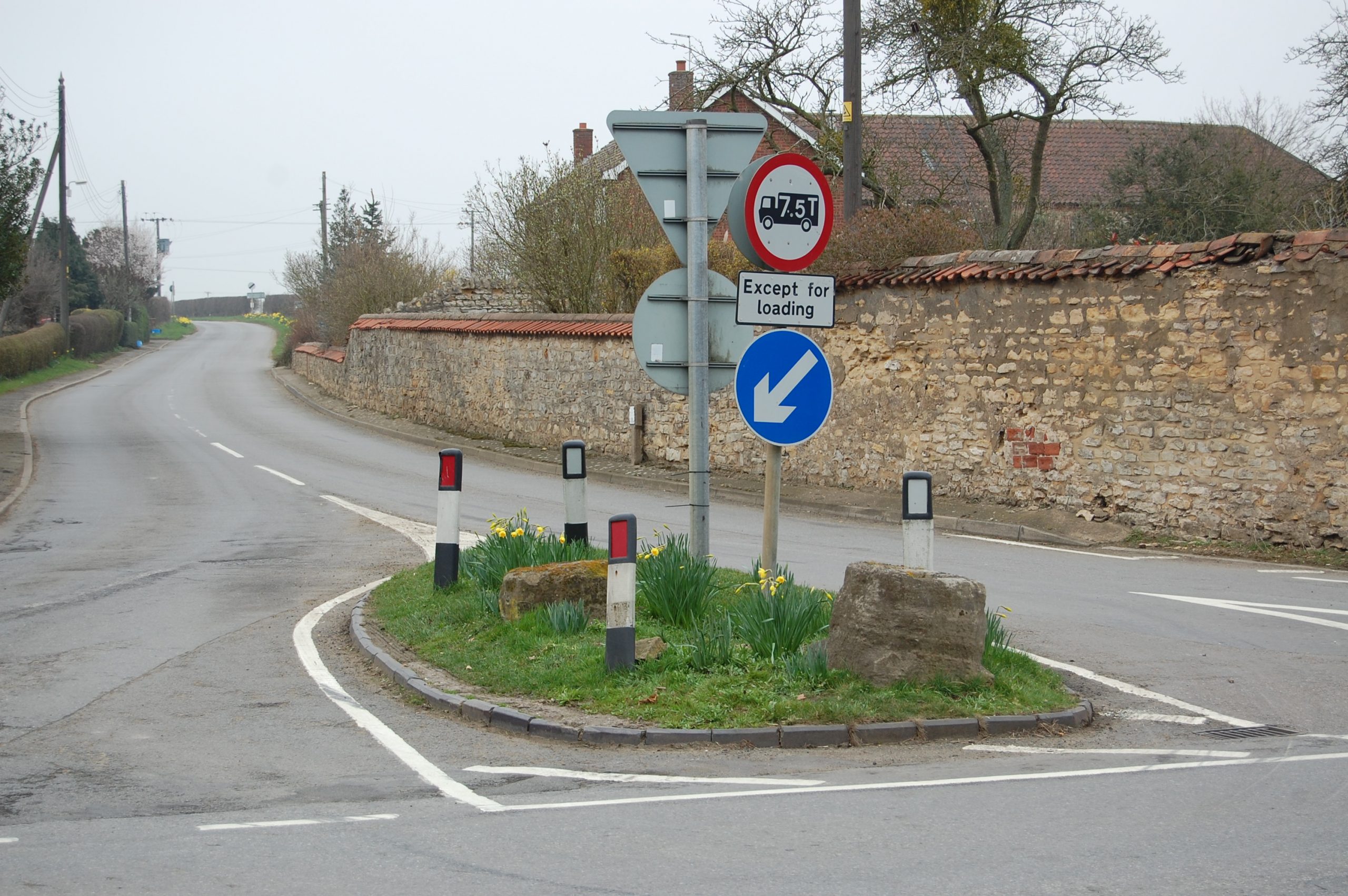
There are two socket-stones on a small traffic island on Ermine Street in the centre of Appleby. The eastern stone is referred to as Appleby I and the western as Appleby II. Parish/District Appleby/North Lincs Location Appleby I & II:

Parish/District Aunsby and Dembleby/North Kesteven Location Now in the back garden of Cherry Tree Farm, Aunsby Category Churchyard cross (?) National Grid Ref TF 0457 3881 Designation None Stone Type Ancaster freestone, Upper Lincolnshire Limestone, Inferior Oolite group Refs Everson,

Parish/District Greetham with Somersby/East Lindsey Location 3.15m south of the south porch of St Margaret’s church, Bag Enderby Category Churchyard cross National Grid Ref TF 3492 7203 Designation Scheduled Stone Type Limestone Refs AP survey 7 Nov 1994 Visits AP:

Parish/District Bardney/West Lindsey Location Two cross fragments (one now in Bardney church) were found during the excavations of nearby Bardney Abbey site 1909-1914 Category Uncategorised National Grid Ref Abbey site: TF 11347 70577 Designation None Stone Type Limestone (both) References

Parish/District Barrowby/South Kesteven Location Placed at the east side of the porch of All Saints church Category Churchyard cross (?) National Grid Ref SK 8787 3648 Designation None Stone type Limestone Refs Visits DS: 28 Apr 2015 A cross base/socket

Parish/District Barrow upon Humber/North Lincs Location Barrow on Humber Market Place(junction of Hight St and Green Ln) Category Market cross National Grid Ref TA 07081 21082 Designation Listed II Stone Type Limestone Refs Visits DS/HH: 12 Mar 2012 Barrow market

Parish/District Barton upon Humber/North Lincs Location south of the tower of St Peter’s church Category Churchyard cross National Grid Ref TA 03457 21937 Designation Listed II Stone Type not known References Visits DS/HH: 12 Mar 2012 Square cross base/SS 68

Parish/District Beckingham/North Kesteven Location c. 35m south of the nave of All Saints church Category Churchyard cross (?) National Grid Ref SK 87563 53761 Designation Scheduled Stone type Limestone Refs AP survey of 15/12/93 Visits AP: 15 Dec 1993 |

Parish/District Belleau/East Lindsey Location c.4m south east of the south porch of St John the Baptist church Category Churchyard cross National Grid Ref TF 40117 78537 Designation Scheduled / Listed II Stone type Limestone Refs AP survey 23 Jan 1998

Parish/District Benniworth/East Lindsey Location c.9m south of tower of St Julian’s church Category Churchyard cross National Grid Ref TF 20938 81767 Designation Scheduled / Listed II Stone Type Limestone Refs Davies LN&Q vol 8; AP Survey 10 Mar 1994 Visits

Parish/District Bilsby/East Lindsey Location south east of the south porch of Holy Trinity church Category Churchyard cross National Grid Ref TF 46652 76700 Designation Scheduled / Listed II Stone type Limestone Refs AP survey 14 June 1995; Davies LN&Q vol
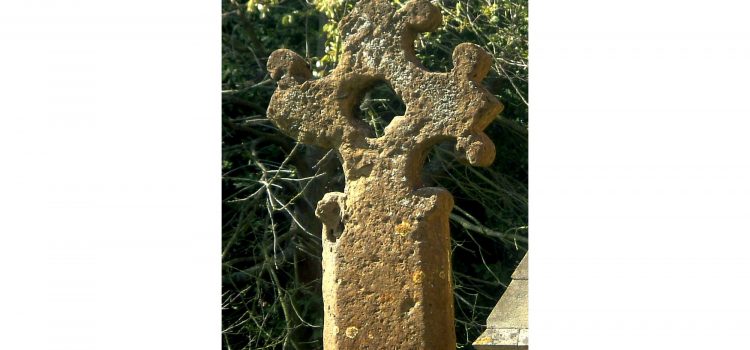
Parish/District Binbrook/East Lindsey Location c. 3m to east of the south porch of St Mary & St Gabriel’s church Category Churchyard cross National Grid Ref TF 21176 93924 Designation Listed II* / Scheduled Stone type Sandstone Refs Davies LN&Q vol

Parish/District Blyton/West Lindsey Location south-east of the south door of St Martin’s church Category Churchyard cross National Grid Ref SK 85333 94782 Designation Scheduled Stone type Limestone Refs AP survey 22 Jan 1998 Visits AP: 22 Jan 1998 | DS/HH:

Parish/District Boston/Boston District Location Boston Market PlaceSkirbeck, St Nicholas church Category Market cross(es) Lost crossesChurchyard cross (Skirbeck) Lost cross National Grid Ref c. TF 3270 4340 (St Anne’s cross)c. TF 32779 44114 (Market cross)c. TF 3382 4309 (Skirbeck cross) Designation

Parish/District Bottesford/North Lincs Location 5 metres south of south porch of St Peter’s church Category Churchyard cross National Grid Ref SE 89941 07006 Designation Listed II Stone type Not known Refs N Lincs HER Visits DS/HH: 4 June 2008 There
There are reports of a Market Cross at Bourne, but nothing remains today Parish/District Bourne/South Kesteven Location Bourne Market Place Category Market Cross (Lost cross) National Grid Ref c. TF 095 201 Designation N/A Stone type N/A Refs Davies, 1916,

Parish/District Braceborough and Wilsthorpe/South Kesteven Location Churchyard of St Margaret’s church Category Churchyard cross (Lost cross) National Grid Ref TF 0824 1329 Designation None Stone type N/A Refs Lincs HER ML133587 Visits DS/HH: 5 Dec 2011 | AP: We failed to

There are records of TWO standing crosses at Bradley in North Lincs. One is the churchyard cross at St George’s church – this is fully described below. A second cross base with stump of a shaft, possibly from a wayside

Parish/District Brant Broughton and Stragglethorpe/North Kesteven Location War memorial cross in St Helen’s churchyard, Brant Broughton Category Churchyard cross National Grid Ref SK 9153 5387 Designation None Stone type Limestone (Clipsham stone) Refs Lincs HER MLI60388; Credland, M., 2014. The

Parish/District Brigsley/North East Lincs Location c. 12m S of the church of St Helen Category Churchyard cross National Grid Ref TA 25465 01799 Designation Listed II Stone type Not known Refs N E Lincs HER; Davies, Lincs N & Q

Parish/District Brinkhill/East Lindsey Location c. 6m SE of the S door of St Philip’s church Category Churchyard cross National Grid Ref TF 37219 73720 Designation Scheduled / Listed II* Stone type Limestone Refs Davies, Lincs N & Q Vol 13

Parish/District Bucknall/East Lindsey Location S of the SE corner of porch of St Margaret’s church Category Churchyard cross National Grid Ref TF 16901 68855 Designation Listed II* with church ? Stone type Limestone Refs Davies, Lincs N & Q, Vol

Parish/District Burwell/East Lindsey Location Market cross building beside the Ai6 in the centre of Burwell village Category Market cross (building) National Grid Ref TF 35502 79598 Designation Listed II Stone type Brick built market hall Refs Pevsner, Lincolnshire, p.202; Visits
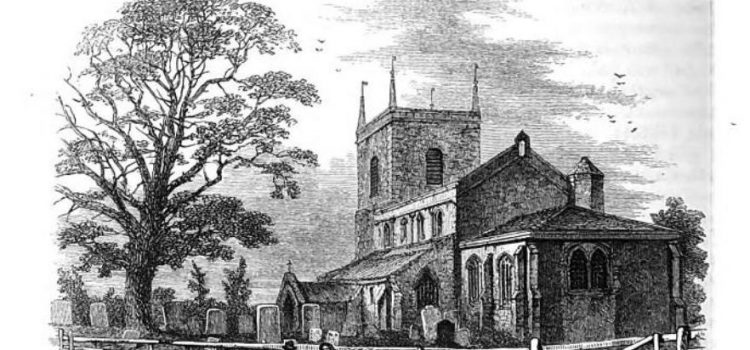
There are reports of a standing stone cross east of the church at Butterwick – No remains survive Parish/District Butterwick/Boston Location On an ’eminence’ to the east of Butterwick church Category Lost Cross National Grid Ref Not located Designation N/A

William Stukeley (1776) reports a standing cross at the spot known as Byard’s Leap. No cross survives, although the hoof prints of the legend are still maintained there. Parish/District Cranwell, Brauncewell and Byard’s Leap/North Kesteven Location Near the point where

Parish/District Carlby/South Kesteven Location S of nave in churchyard of St Stephen’s church Category Churchyard cross National Grid Ref TF 04980 13884 Designation Listed II Stone type Not known Refs Visits Not visited Square cross base – Fragment of octagonal

Parish/District Reston/East Lindsey Location In the churchyard of the (now demolished) Holy Cross church at Castle Carlton Category Churchyard cross National Grid Ref TF 3986 8369 Designation None Stone type Not known Refs See Lincs HER; Bonney’s Church Notes (1947)

Parish/District Caythorpe/South Kesteven Location c. 5m SE of south porch of St Vincent’s church Category Churchyard cross National Grid Ref SK 93889 48550 Designation Scheduled; Listed II Stone type Limestone Refs Davies, Lincs N & Q, Vol 12 | AP

Parish/District Claypole/South Kesteven Location c. 5m SE of the S transept of St Peter’s church Category Churchyard cross National Grid Ref SK 84564 48978 Designation Scheduled / Listed II Stone type Limestone Refs Davies, Lincs N & Q Vol 12

Parish/District Grasby/West Lindsey Location West of the restored chancel of All Hallows church Category Churchyard cross National Grid Ref TA 10217 04329 Designation Listed II Stone type Limestone (and sandstone restoration) Refs AP Survey 4 Aug 1997 Visits AP 4
LOST CROSS Davies gives the following report of a cross base at Coningsby: Village Cross – The base of an old cross is to be seen in a public house yard at the east end of the village. The stone

Parish/District Corby Glen/South Kesteven Location In the Market Place at Corby Glen – slightly north of central Category Market cross National Grid Ref SK 99907 25008 Designation Scheduled / Listed II Stone type Limestone (with later brick restoration) Refs Davies,

Parish/District Cranwell, Brauncewell and Byard’s Leap/ North Kesteven Location In a tarmacked area at the centre of a road junction south west of the parish church Category Village Cross National Grid Ref TF 03230 49937 Designation Scheduled / Listed Stone
Crowland is something of a special case as it has a series of boundary crosses which are said to have been erected to mark the boundaries of the lands of Crowland abbey. The history of the Crowland crosses has been
Parish/District Crowland/South Holland Location Remounted on a modern rough stone plinth at the south side of Wash Bank, c. 20m west of the crossroads with the old A1073 (now Spalding Road) at Brotherhouse Bar Category Boundary Cross (Wayside Cross) National Grid Ref
Parish/District Thorney/Peterborough Location Relocated in a grassed area alongside the B1040 adjacent to St Vincent’s Farm Category Boundary Cross (Wayside Cross) National Grid Ref Now at TF 25926 07785(listed at TF 25832 07516) Designation Listed / Scheduled Stone Type Not
Parish/District Crowland/South Holland Location Between the river Welland and Asholt Drain, c. 3km south west of Crowland, near to a public footpath (quite remote) Category Boundary cross (Wayside cross) National Grid Ref TF 20959 09191 Designation Listed II / Scheduled
Parish/District Crowland/South Holland Location At the junction of South Street and East Street in the centre of Crowland Category Lost Cross National Grid Ref TF 23941 10241 Designation The bridge is scheduled and listed I Stone type Limestone (Barnack stone)
Parish/District Crowle and Ealand/North Lincs Location In the churchyard of St Oswald’s Church, Crowle, c. 5m south of nave Category Churchyard cross National Grid Ref SE 77158 12970 Designation Listed II Stone type Limestone Refs Visits DS/HH: 4 June 2008

Parish/District Deeping St James/South Kesteven Location On a cobbled area at the junction of Church Street and Eastgate, south of the church Category Market Cross National Grid Ref TF 15807 09490 Designation Listed I / Scheduled Stone type Limestone and

There are two crosses at Denton – One in the churchyard and one in the garden of Leys House. On our visit in 2006, we failed to find the second cross, so it is described below from other sources. Parish/District

Parish/District Digby/North Kesteven Location Now a traffic island at the junction of Church St, Beck St and North Street Category Village cross National Grid Ref TF 08142 54777 Designation Listed II / Scheduled Stone type Limestone Refs Trollope, 1872, Sleaford

Parish/District Dorrington/North Kesteven Location In a gravelled enclosure adjacent to 75 Main Street, Dorrington Category Village cross National Grid Ref TF 08178 52894 Designation Listed II Stone type Limestone Refs Davies, D S, 1916, Lincs N & Q, Vol XIV pp.21-31

Parish/District Dunsby/South Kesteven Location On the roadside at the junction of Main Road and Dunsby Drove. Socket stone still present but now buried beneath paving slabs Category Village cross (now a lost cross) National Grid Ref TF 10587 26864 Designation

Parish/District Stoke Rochford/South Kesteven Location In centre of road/track at northern entrance to Easton Hall Category Modern cross National Grid Ref SK 92758 26802 Designation Listed II Stone type Limestone Refs Visits This appears to be an entirely modern (1840)

Parish/District Edenham/South Kesteven Location In the churchyard of St Michael’s Church, Edenham, approximately 12m south west of the tower Category Churchyard cross National Grid Ref TF 06194 21804 Designation Scheduled / Listed II Stone type Limestone Refs AP Survey 7

Parish/District Epworth/North Lincs Location On the west side of Epworth market place Category Market cross National Grid Ref SE 78315 03788 Designation Listed II Stone type Limestone Refs Visits DS/HH: 4 June 2008 A very famous market cross in Epworth,

The imposing market cross at Ewerby is well known, but there is also a lost churchyard cross, recorded by Trollope (p.365). Both are recorded below: Market Cross Parish/District Ewerby and Evedon/North Kesteven Location On a small green by Main Street, west

Parish/District Bilsby/East Lindsey Location c. 15m S of W porch of St Andrew’s church, Farlesthorpe Category Churchyard cross National Grid Ref TF 47528 74008 Designation None Stone type Limestone Refs D. S. Davies, D S, 1915, Lincs N & Q,

Parish/District Firsby/East Lindsey Location The socket stone has been placed by the S porch (E side)The WM incorporating the shaft is 5m south of Nave/chancel junction Category Churchyard cross (part converted to War Memorial) National Grid Ref TF 45512 62624
There are reports of a Market Cross in Folkingham market place, but no trace remains today Parish/District Folkingham/South Kesteven Location Folkingham Market Place Category Market Cross (Lost cross) National Grid Ref TF 07261 33497 (estimated) Designation N/A Stone type N/A

Parish/District Fosdyke/Boston Location c. 8.5m south of the south porch of All Saints church Category Churchyard cross National Grid Ref TF 31512 33306 Designation Scheduled Stone type Limestone Refs A P Survey 2 Feb 1994; Visits AP: 2 Feb 1994

Parish/District Freiston/Borough of Boston Location In the NW corner of the churchyard of St James’s Church, Freiston. Category Churchyard cross (or a market cross?) National Grid Ref TF 37632 43792 Designation Scheduled / Listed II Stone type Limestone Refs A
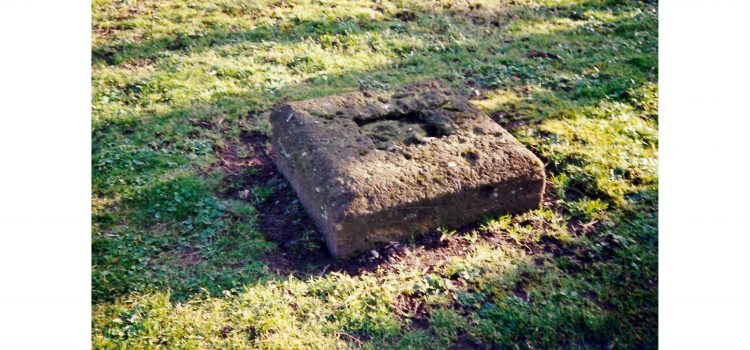
Parish/District Friesthorpe/West Lindsey Location c. 5m S of the S door of St Peter’s church Category Churchyard cross National Grid Ref TF 07198 83401 Designation Scheduled Stone type not known Refs A P Survey 10 Mar 1994; Davies, D. S.,

Parish/District Friskney/East Lindsey Location South east of the south porch of the church of All Saints Church, Friskney Category Churchyard cross National Grid Ref TF 46065 55378 Designation Scheduled / Listed I Stone type Limestone Refs A P Survey 9

Fulbeck village cross is described here, but there is also an interesting socket stone reused on Fulbeck war memorial in the churchyard – Is it the remains of a medieval churchyard cross? Photo below Parish/District Fulbeck/South Kesteven Location The cross

Parish/District Fulstow/East Lindsey Location To the south east of the south porch in the churchyard of St Lawrence’s church Category Churchyard cross National Grid Ref TF 32415 97733 Designation Scheduled Stone type Limestone Refs A P Survey 23 Jan 1998;

Parish/District Gedney Hill/South Holland Location c. 2m south of the porch of Holy Trinity church Category Churchyard cross (and war memorial) National Grid Ref TF 33868 11261 Designation Listed II Stone type Limestone and bricks Refs A P Survey 28

Parish/District Hough on the Hill/South Kesteven Location On Gelston village green Category Village Cross National Grid Ref SK 91301 45324 Designation Scheduled / Listed II Stone type Limestone Refs A P Survey 15 Dec 1993; Davies, D. S., 1916, Lincs

Grantham has three crosses to describe – Its market cross and two lost crosses: the Eleanor Cross and the Apple Cross. Grantham’s Eleanor Cross is described in the section on Eleanor crosses (here) and the Apple Cross is described in

Parish/District Grantham/South Kesteven Location Thought to have been on open ground – then a market place – to the west of St Wulfram’s church Category Lost cross National Grid Ref c. SK 91394 36106 Designation N/A Stone type N/A Refs

Parish/District Grayingham/West Lindsey Location Outside the Old School House, Low Road, Grayingham Category Village Cross National Grid Ref SK 93482 96135 Designation None Stone type Limestone Refs AP survey 22 Jan 1998; Lincs HER record Visits AP 22 Jan 1998
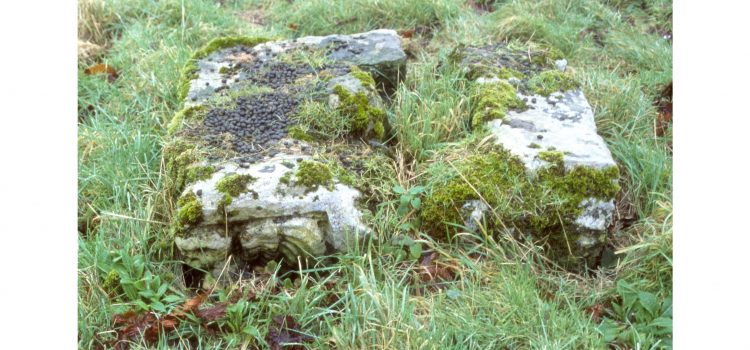
Parish/District Great Steeping/East Lindsey Location c. 10m south of the nave of the old church (formerly All Saints) at Great Steeping Category Churchyard cross National Grid Ref TF 43478 63921 Designation Scheduled Stone type Limestone Refs AP survey 19 Oct

Parish/District Grimoldby/East Lindsey Location north west of the north porch of St Edith’s church Grimoldby Category Churchyard cross (originally village cross) National Grid Ref TF 39251 87970 Designation Scheduled / Listed II Stone type Limestone Refs AP survey 23 Jan
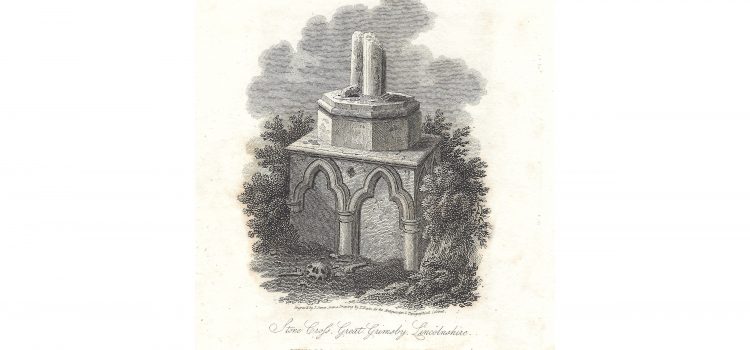
Parish/District Grimsby/North East Lincs Location c. 10m south of St James’s church, Grimsby Category Market cross (Now Churchyard cross) National Grid Ref TA 26652 09143 Designation Listed II Stone type Limestone Refs Davies, D. S., 1915, Lincs N & Q,

Parish/District Gunby and Stainby/South Kesteven Location c. 3m south of the nave in the churchyard of St Nicholas’s church, Gunby Category Churchyard cross National Grid Ref SK 91274 21546 Designation Scheduled / Listed II Stone type Limestone Refs AP survey

Parish/District Haltham on Bain/East Lindsey Location c. 8.5m south of the nave of St Benedict’s Church, Haltham Category Churchyard cross National Grid Ref TF 24603 63827 Designation Scheduled / Listed II Stone type Limestone Refs AP survey 8 Mar 1994;

Parish/District Harlaxton/South Kesteven Location on a small green at a road junction in the village centre Category Village cross National Grid Ref SK 88446 32662 Designation Scheduled / Listed II Stone type Sandstone and Limestone Refs AP survey 8 Dec

Parish/District Haxey/North Lincs Location at the junction of High Street, Low Street and Haxey Lane Category Market cross (Butter cross) National Grid Ref SK 77420 99722 Designation Scheduled / Listed II Stone type Limestone (on modern brick base) Refs Davies,

Parish/District Haxey/North Lincs Location on the pavement at the edge of the modern road, at the eastern end of the churchyard of St Nicholas Church, approximately 50m to the east of the church Category Village cross (now Mounting Block) National

Parish/District Haxey/North Lincs Location on the remains of a green at the junction of Church Street, High Street and Greenhill Road Category Village cross National Grid Ref SK 76797 99896 Designation Scheduled / Listed II Stone type Limestone Refs Davies,

Parish/District Healing/North East Lincs Location c. 9m west of church of SS Peter and Paul, Healing Category Churchyard cross (sundial conversion) National Grid Ref TA 21368 10094 Designation Listed II Stone type Limestone Refs Visits DS/HH: 12 March 2012 A
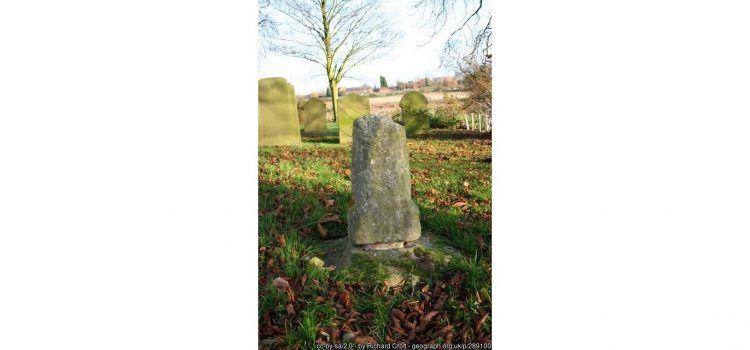
Parish/District Heapham/West Lindsey Location c. 5.5m south of the south porch of All Saints Church Category Churchyard cross National Grid Ref SK 87805 88503 Designation Scheduled / Listed II Stone type Limestone Refs AP Survey 13 Nov 1998; Davies, D

Parish/District Heckington/North Kesteven Location c. 8m south west of the south transept of St Andrew’s Church, Heckington Category Churchyard cross National Grid Ref TF 14292 44107 Designation Scheduled / Listed II Stone type Limestone Refs AP Survey 7 Jan 1994;

Parish/District Helpringham/North Kesteven Location on Helpringham village green, east of the parish church Category Village cross (converted to war memorial) National Grid Ref TF 13977 40758 Designation Scheduled / Listed II Stone type Limestone Refs AP Survey 3 Dec 1993;

Parish/District Holbeach/South Holland Location Possibly at the main crossroads to the north of All Saints church Category Lost Cross (market cross) National Grid Ref TF 3585 2485 (vicinity of) Designation N/A Stone type – Refs Peet, H, 1896, Holbeach High
Parish/District Holton-Le-Clay/East Lindsey Location south east of the south door of St Peter’s Church Category Churchyard cross National Grid Ref TA 28653 02763 Designation Scheduled / Listed II Stone type Limestone Refs Visits DS/HH: 7 Sept 2009

Parish/District Asgarby and Howell/North Kesteven Location c. 4m south east of south porch of St Oswald’s church Category Churchyard cross National Grid Ref TF 13506 46243 Designation Scheduled / Listed II* Stone Type Limestone Refs AP Survey record 1993Davies, D.